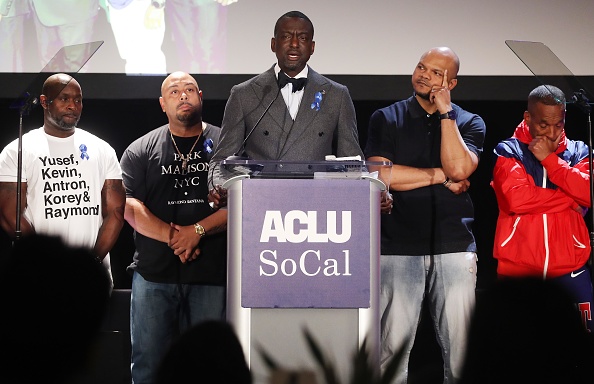By Celina Daigle
On the night of April 19, 1989 five young and innocent men were arrested and soon to be falsely convicted for the attack and rape of Trisha Meili, a 28-year-old white woman jogging through Central Park. On that night, the case against the Central Park Five was born. These five young men of color consisted of 14-year-olds Kevin Richardson and Raymond Santana, 15-year-olds Yusef Salaam and Antron McCray and 16-year-old Korey Wise.
Now, a little over 31 years after the Central Park Jogger case began, University of Connecticut’s SUBOG held a live streamed event from the Jorgensen with Raymond Santana and Dr. Yusef Salaam titled, Now They See Us, on Wednesday, September 9. The men recounted the night that they, and the three others, went from being regular kids to becoming members of the Central Park Five.
In the interview, Santana and Salaam recalled being described as monsters by over 4,000 articles about their convictions. Yet, the moment their truth came out, nothing more than a whisper was heard by the world.

They each highlighted key details from that spring night.
“People have to understand we were 14-, 15-year-old kids who have never experienced this…We didn’t know about Miranda [rights], about tricks on law and order that are used on us,” Santana said. He said he remembers going 15-30 hours without eating, sleeping or drinking and feeling as if he was “backed into a corner.” Santana said, “As a 14-year-old kid, the pressure is on.”
Salaam added on to Santana’s statement, expressing his opinion as he said, “When you look like me and Raymond, they automatically perceive you as guilty,” alluding to the color of their skin.
After 9 p.m. that April evening of the attack, more than 30 teenagers gathered together in Central Park — two of these young men were Richardson and Santana. When a male jogger was found beaten by the group of teens, an immediate public outcry began, and police scavenged to arrest anyone who they suspected to be involved in that attack. A few hours later, Meili’s body was found, and the interrogation of Richardson, Santana, Salaam, McCray, and Wise began.
Four of the five boys confessed on camera to committing the crime of Meili’s rape after hours of aggressive interrogation and coercion, although they had never even seen her that night, nor did their stories all line up. Richardson, Santana, Salaam, and McCray were convicted within the juvenile court, while Wise, being 16, was charged as an adult. They each spent between five and 12 years behind bars, before all of them were officially exonerated in 2002, when the real rapist Matias Reyes, who was already serving time for his known accounts as a serial rapist and murderer, came forward.
It took almost 13 years for the truth to come out about the men. Over that time, a few of them got their GEDs while incarcerated, while others, like Wise, struggled with being just a teenager in Rikers Island Prison.
“This was the truth we had to relive because it was necessary.”
Raymond Santana
In the back half of the interview, Santana and Salaam discussed the creation of the Netflix documentary about their experience, When They See Us.
“This was the truth we had to relive because it was necessary,” Santana said. “There were children who didn’t know who the Central Park Five were.”
And so, he reached out to producer and writer Ava DuVernay who, with the help of the four other convicted men, worked to create an accurate representation of the Central Park Jogger case. Their story as the Central Park Five became the Exonerated Five, as they like to call themselves now.
To fully portray the experiences that Richardson, Wise, Santana, Salaam and McCray went through, there were grief counselors on set to help the actors become the original Central Park Five. As such a hit on Netflix, an impactful story, the film has been produced in over 190 languages.
As the event concluded, Santana and Salaam answered a few questions by UConn students.
Student Katherine Morris asked, “What advice would you give black women abolitionists?”
“We have the power to fight. We have the power to win,” Salaam said, quoting Assata Shakur. “We must love each other and support each other. We have nothing to lose but our chains.”
They said that being black young men affected how McCray, Santana, Richardson, Wise, and Salaam were treated by the justice system. No one truly listened to the words they had to say or paid any attention to the key details that proved their innocence immediately. All that the world saw were five Black boys and one white woman. Nothing else had to be said for the court to have decided who was guilty of the crime.
According to Santana, there will be a new America someday, and it will represent the kaleidoscope of families that Martin Luther King Junior once envisioned.


